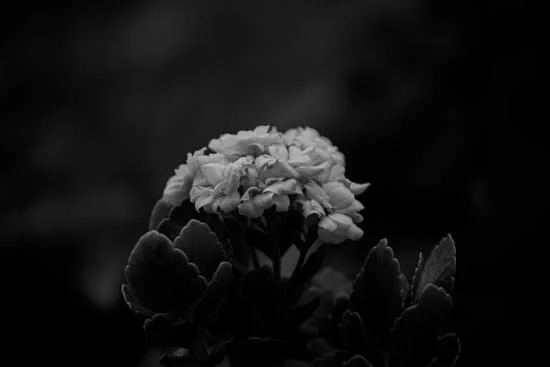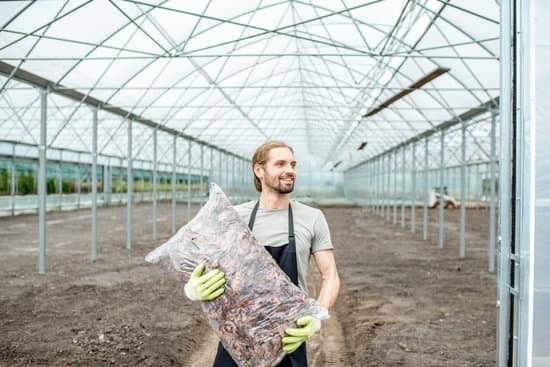Gardening enthusiasts with limited outdoor space can still indulge in their passion with these 10 creative gardener ideas designed specifically for small spaces. From maximizing vertical gardening to incorporating edible plants into your garden design, there are endless possibilities to create a lush and vibrant oasis no matter how confined the space may be.
For those looking to spice up their small space, DIY gardener projects ranging from upcycled planters to homemade garden tools offer a fun and personalized touch. Additionally, understanding the benefits of companion planting can help ensure a healthy and thriving garden environment, even in compact areas.
With seasonal gardener ideas tailored for spring planting, summer maintenance, and fall harvesting, you can enjoy a year-round green thumb experience. And for those interested in sustainable practices, incorporating composting and rainwater harvesting techniques into your gardening routine can lead to eco-friendly and resourceful outcomes.
Maximizing Vertical Gardening
Vertical gardening is an excellent way to maximize space in small areas while adding a touch of creativity to your garden. By utilizing vertical structures such as trellises, wall planters, or hanging baskets, you can make the most of your available space and create a stunning display of plants and flowers.
One idea for vertical gardening is to use a ladder as a plant stand, allowing you to layer multiple plants at different heights for a visually appealing arrangement. Another creative approach is to repurpose old pallets as vertical gardens, providing ample room for planting various herbs, flowers, or succulents.
When it comes to maximizing vertical gardening, proper planning and maintenance are key. Consider the sunlight exposure of your chosen vertical garden spot and select plants that thrive in those conditions. Additionally, ensure that your vertical structures are securely attached to walls or fences to prevent accidents. Regular watering and pruning are essential for the health of your vertical garden, so be sure to monitor the moisture levels and growth of your plants regularly.
Incorporating a mix of trailing vines, compact shrubs, and colorful flowers into your vertical garden can create a lush and vibrant display throughout the growing season. Furthermore, incorporating elements such as drip irrigation systems or self-watering planters can help maintain proper hydration levels for your vertical garden without requiring constant attention.
With these tips and tricks in mind, you can transform any small space into a thriving oasis with a stunning vertical garden design that will impress both guests and passersby.
| Vertical Gardening Tips | Details |
|---|---|
| Utilize Vertical Structures | Use trellises, wall planters or hanging baskets. |
| Select Plants Wisely | Choose plants that thrive in the sunlight exposure of your chosen spot. |
| Maintenance Tips | Maintain regular watering schedules and pruning routines for healthy growth. |
Incorporating Edible Plants Into Your Garden Design
When it comes to gardening, incorporating edible plants into your garden design can not only add beauty but functionality as well. By growing your own fruits, vegetables, herbs, and even edible flowers, you can create a sustainable and bountiful garden that provides fresh produce for your kitchen. Here are some creative ways to integrate edible plants into your garden design:
- Utilize vertical space: Vertical gardening is a fantastic way to maximize space in a small garden area. Consider installing trellises, hanging baskets, or wall-mounted planters to grow climbing vegetables like tomatoes, cucumbers, and beans.
- Mix edibles with ornamentals: Create a visually appealing garden by intermixing edible plants with flowers and shrubs. Incorporate colorful lettuce varieties, kale, or Swiss chard among your flowering plants for a stunning and practical display.
- Design an herb spiral: Herb spirals are a popular permaculture technique that allows you to grow a variety of herbs in a small footprint. By planting herbs such as basil, parsley, thyme, and mint in different levels of the spiral, you can easily access them while enjoying a beautiful feature in your garden.
In addition to enhancing the aesthetics of your outdoor space with edible plants, you can also savor the benefits of homegrown produce right at your doorstep. Whether you have a spacious backyard or just a balcony or windowsill available for gardening, there are endless possibilities to incorporate edibles into your garden design creatively.
- Create an edible landscape: Instead of restricting edible plants to separate vegetable beds, consider integrating them throughout your landscape design. Plant fruit trees like apple or cherry along walkways or mix blueberry bushes with ornamental shrubs for both visual interest and tasty harvests.
- Start a container garden: If space is limited, container gardening is an excellent option for growing edibles on patios or balconies. Plant herbs like rosemary or lavender in pots near doorways for easy access while enhancing the fragrance of your outdoor living area.
How to Design a Relaxing Meditation Garden
Designing a relaxing meditation garden can provide a peaceful sanctuary for individuals to unwind, destress, and connect with nature. Whether you have a spacious backyard or a small balcony, creating a tranquil space for meditation is achievable with the right gardener ideas. Here are some tips to help you design your own meditation garden:
- Choose calming colors: Opt for plants in shades of green, blue, lavender, and white to create a serene atmosphere.
- Create defined areas: Designate spaces for seating, walking paths, and meditation spots to encourage relaxation and reflection.
- Incorporate elements of water: Adding a small fountain, birdbath, or reflecting pool can enhance the sense of tranquility in your garden.
Integrating natural materials such as wood, stone, and bamboo can further enhance the Zen-like feel of your meditation garden. Consider using these materials for pathways, benches, or decorative accents. In addition to plants that appeal to the senses with their fragrances and textures.
- Choose aromatic herbs like lavender, rosemary, and mint to stimulate the sense of smell during meditation sessions.
- Include soft foliage plants like ferns and moss for their soothing textures that invite touch and create a calm ambiance.
- Select plants with varying heights and shapes to add visual interest and create a sense of harmony in your garden design.
By incorporating these gardener ideas into your design process, you can create an inviting space that promotes mindfulness and relaxation. Remember that the key to designing a successful meditation garden is to prioritize simplicity, natural elements, and personal preferences. Enjoy the process of creating your own peaceful retreat where you can unwind and find inner peace amidst the beauty of nature.
DIY Gardener Projects
When it comes to DIY gardener projects, the possibilities are endless for those with a creative spirit and a green thumb. One popular idea is to upcycle old items into unique planters for your garden. That could include repurposing tin cans, wooden crates, or even old tires to create visually appealing containers for your plants. Not only does this add a quirky touch to your garden, but it also helps in reducing waste by giving new life to discarded materials.
Another fun and practical DIY project for gardeners is creating homemade garden tools. From hand tools like trowels and planting dibbers to larger tools such as raised bed makers or compost sifters, there are plenty of ideas to explore. Making your own garden tools allows you to customize them according to your needs and preferences, while also saving money compared to buying ready-made ones from stores.
For those looking to take their DIY gardener projects a step further, consider incorporating technology into the mix. From building automated watering systems using Arduino controllers to constructing solar-powered garden lights, there are endless opportunities to combine gardening with innovative DIY creations. Embracing technology in your gardening projects can not only make things more efficient but also showcase the intersection of nature and modern advancements in a creative way.
| DIY Gardener Projects | Ideas |
|---|---|
| Upcycled Planters | Repurposing old items for unique containers |
| Homemade Garden Tools | Creating customized tools for gardening needs |
| Technology Integration | Incorporating modern tech into gardening projects |
The Benefits of Companion Planting for Healthy Gardens
Companion planting is a gardening technique that involves planting different species of plants together to maximize the health and productivity of the garden. By carefully selecting plant combinations that support each other’s growth, you can create a thriving ecosystem that minimizes pests, enhances soil fertility, and increases yield.
One of the key benefits of companion planting is natural pest control. Some plants have natural properties that repel pests or attract beneficial insects, helping to keep harmful bugs at bay without the need for chemical pesticides.
Enhancing Soil Health
Companion planting can also benefit soil health by promoting biodiversity in the garden. Certain plant combinations can help break up compacted soil, fix nitrogen levels, or even act as natural mulch to retain moisture and suppress weeds. For example, planting nitrogen-fixing legumes like peas or beans alongside heavy feeders like tomatoes can help provide essential nutrients to the soil while reducing the need for synthetic fertilizers.
Improving Plant Growth
In addition to pest control and soil health benefits, companion planting can also improve overall plant growth and productivity. Some plant combinations work together to enhance flavor profiles or increase yields, creating a harmonious environment where each plant thrives.
For example, pairing aromatic herbs like basil with tomatoes not only deters pests but also improves the flavor of the tomatoes themselves. Experimenting with different plant combinations based on their symbiotic relationships can result in a more diverse and flourishing garden ecosystem.
Seasonal Gardener Ideas
Spring is a time of growth and renewal in the garden, making it the perfect season to start planting and preparing for the warmer months ahead. One creative idea for small spaces is to utilize vertical gardening techniques to make the most of limited space. Hanging baskets, trellises, and vertical planters can all help maximize space while adding visual interest to your garden. Consider planting herbs, flowers, or even vegetables that thrive in vertical growing conditions.
As summer arrives, maintenance becomes key to keeping your garden healthy and vibrant. To make the upkeep more manageable, try incorporating edible plants into your garden design. Not only will you be able to enjoy fresh produce from your own backyard, but these plants can also add beauty and diversity to your space. Consider planting a mix of fruits, vegetables, and herbs that are well-suited to your region’s climate and sunlight.
In the fall, it’s time to reap the rewards of all your hard work throughout the year by harvesting your crops and preparing for the colder months ahead. As you plan your fall harvest, think about using sustainable gardening practices like composting and rainwater harvesting to enrich your soil and conserve resources.
These eco-friendly techniques not only benefit your garden but also help reduce waste and promote a healthier environment overall. By implementing these seasonal gardener ideas throughout the year, you can create a thriving garden that provides beauty, sustenance, and relaxation for both you and your local wildlife.
Sustainable Gardening Practices
Composting: Turning Kitchen Scraps Into Nutrient-Rich Soil
One of the key elements of sustainable gardening is composting, which involves decomposing organic matter such as kitchen scraps, yard waste, and paper to create nutrient-rich soil for your plants. By diverting these materials from landfills and turning them into compost, you can reduce greenhouse gas emissions and enrich your garden with natural fertilizers.
To get started with composting, set up a designated bin or pile in your backyard, layering green (nitrogen-rich) and brown (carbon-rich) materials to facilitate decomposition. With regular turning and moisture management, you’ll soon have a batch of homemade compost ready to nourish your garden.
Rainwater Harvesting: Harnessing Nature’s Gift for Water Conservation
Another sustainable gardening practice is rainwater harvesting, which involves collecting rainwater runoff from roofs or other surfaces to use for watering your plants. By capturing this free and abundant resource, you can reduce your reliance on municipal water sources while also minimizing stormwater runoff and erosion in your yard. Setting up a rain barrel or cistern allows you to store rainwater for later use during dry spells or drought conditions.
Simply attach a drip irrigation system or watering can to the barrel’s spigot to easily distribute collected rainwater to your garden beds and containers. Not only does rainwater harvesting help conserve water, but it also reduces water bills and promotes self-sufficiency in gardening practices.
By incorporating composting, rainwater harvesting, and other sustainable gardening practices into your routine, you can create a more eco-friendly garden that thrives without depleting natural resources. These simple yet impactful techniques not only benefit the environment but also improve the health and vitality of your plants. Embrace sustainability in your gardening endeavors to cultivate a greener future for both yourself and the planet.
Creating a Wildlife-Friendly Garden
In addition to planting flowers that attract pollinators, consider adding features like bird feeders, bird baths, and butterfly houses to your garden. These elements create inviting spaces for wildlife to visit, providing them with essential resources for survival.
Proper placement of these features within your garden can also help minimize competition among different species and reduce the risk of predators disrupting their activities. By strategically placing bird feeders away from potential hiding spots for predators, you can create a safe environment that encourages regular visits from birds and butterflies.
Furthermore, incorporating water sources such as ponds or small shallow dishes filled with water can attract a wide range of wildlife, including birds and butterflies. Providing clean water for drinking and bathing is essential for maintaining a healthy ecosystem in your garden.
Bees are also attracted to water sources but prefer shallow containers with rocks or pebbles where they can safely land without drowning. By implementing these simple gardener ideas into your wildlife-friendly garden design, you can create a haven for diverse species while promoting biodiversity and ecological balance in your outdoor space.
Indoor Gardening Ideas
In the hustle and bustle of modern life, indoor gardening has become a popular trend for those looking to bring a touch of nature into their homes. With limited outdoor spaces, many individuals are turning to potted plants and herb gardens as a way to satisfy their green thumbs. From air-purifying houseplants to fresh herbs for culinary delights, indoor gardening offers a myriad of benefits for both the body and soul.
One of the key advantages of indoor gardening is the ability to enjoy greenery year-round, regardless of seasonal limitations. Potted plants and herb gardens not only provide aesthetic appeal but also contribute to improved air quality within your living space. Incorporating plant life indoors can create a sense of tranquility and connection to nature even in the heart of urban environments.
Whether you’re a seasoned gardener or just starting out, indoor gardening opens up a world of possibilities for creativity and self-expression. From succulents in charming terrariums to window herb gardens bursting with flavor, there are endless opportunities to personalize your indoor oasis.
Embrace your inner gardener and explore the wealth of ideas available for transforming any indoor space into a thriving green sanctuary. So roll up your sleeves, grab your trowel, and let your imagination bloom with indoor gardener ideas.
Frequently Asked Questions
What Is the Best Low Maintenance Garden?
The best low-maintenance garden is one that includes perennial plants, native species, and a well-thought-out design. By selecting plants that require minimal care and attention, you can reduce the need for regular maintenance tasks such as watering, pruning, and fertilizing.
What Is a Good Garden Plan?
A good garden plan typically involves careful consideration of factors such as sunlight exposure, soil quality, and plant selection. It’s important to assess your site conditions before creating a layout that maximizes the potential of your space. Incorporating a variety of plants with different heights, textures, and colors can help create visual interest throughout the seasons.
How Do You Make a Pretty Garden?
To make a pretty garden, focus on creating balance and harmony in your design. Consider incorporating elements such as pathways, focal points like statues or water features, and varied plantings to add interest.
Pay attention to color combinations and plant placement to ensure an aesthetically pleasing arrangement. Regular maintenance tasks such as weeding, deadheading flowers, and keeping paths clear can also contribute to a beautiful garden space.

Welcome to my gardening blog! I am passionate about plants and enjoy sharing my knowledge and experiences with others. In this blog, I will write about everything related to gardening, from tips on how to get started to updates on my own garden projects.





